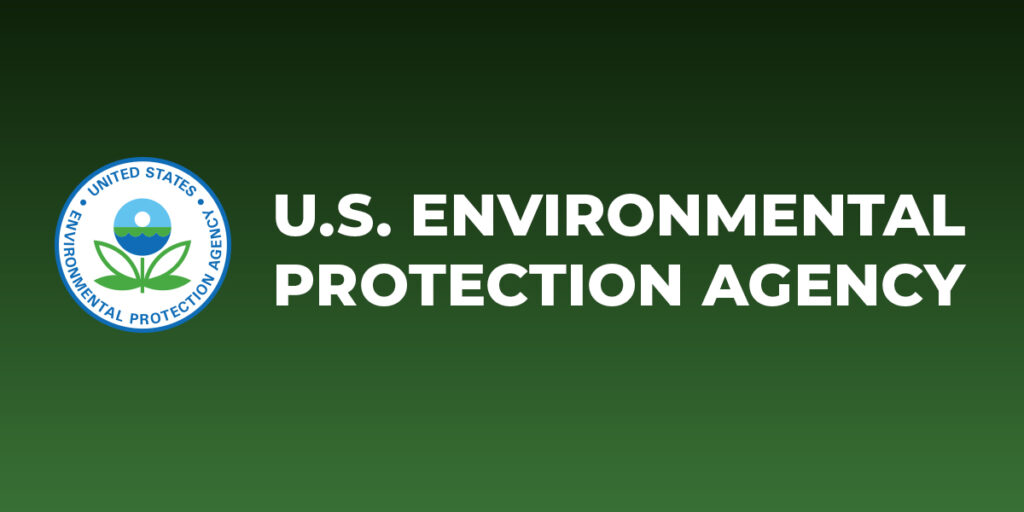 (AGENPARL) - Roma, 4 Dicembre 2024
(AGENPARL) - Roma, 4 Dicembre 2024(AGENPARL) – mer 04 dicembre 2024 Issued: Dec 4, 2024 (1:11pm EST)
If you wish to unsubscribe please do so
here: http://url6130.epa.mediaroom.com/ls/click?upn=u001.iqz6hAvLdUl-2FaSixKUG3iyFJBsxNAroAZOQ1BID8fKIiLAUfJX2sQlhu1tzKAOIu-2BU84uzAzSpWvmWyHnsNJDRYXWx5dlMz75Zp9ch-2BQlG6mQHPYjReZhS13hvd5qOopAaoE_-2B0Ok6Af7hyz7Kqg6CR74pYblAA1WjrUjKSJUAiv3NOub0DC4O7JPWGxIlQ7kBB-2FSsTw1FFAl-2F8EvRLHCG7uFQGPmy-2B9gK4LA0AwLUmhqN1vjUXYXwDG2we3B-2FPA-2FV-2FH4KsZMAcKHmmPqUHFWg2s9Qb6V4EJcqZYLSou5KZEIpQ8z-2Fom-2BfZOE26SzkSVQJyGT0NhBBXzlxKNDVUlt3V3D0ZvMxKpevWLy33BcO-2BiiHzniwuXi0fQra1eXGdeDAK-2B6
EPA Reforms New Chemicals Review Process to Better Protect Public Health,
Promote Efficiency and Consistency
Final amendments will ensure that new PFAS and persistent, bioaccumulative and
toxic (PBT) chemicals are subject to safety review process prior to
manufacture
WASHINGTON – Today, Dec. 4, the U.S. Environmental Protection Agency (EPA)
finalized amendments to the regulations that govern the Agency’s review of
new chemicals under the Toxic Substances Control Act (TSCA) to ensure that new
per- and polyfluoroalkyl substances (PFAS) and persistent, bioaccumulative and
toxic (PBT) chemicals with potential for human exposure are always subject to
the full, robust safety review process prior to manufacture. Under TSCA, EPA
plays an important role by reviewing the potential risks of new chemicals
before they can enter U.S. commerce and, when necessary, putting safeguards in
place to protect human health and the environment. Today’s final rule also
improves efficiency and aligns with the 2016 bipartisan TSCA amendments under
the Frank R. Lautenberg Chemical Safety for the 21st Century Act, and is
largely similar to the rule EPA proposed in May 2023.
“EPA’s review of new chemicals should encourage innovation, while also
making sure that new chemistries can be used safely before they are allowed to
enter commerce,” said Assistant Administrator for the Office of Chemical
Safety and Pollution Prevention Michal Freedhoff. “Today, we’ve modernized
our chemical reviews and continued to protect people from unsafe new
PFAS.”
Eliminate exemptions for PFAS and PBTs with potential for human exposure
Today’s final rule ensures that new PFAS are always subject to the full,
robust safety review process prior to manufacture by eliminating their
eligibility for a low volume exemption (LVE) or low release and exposure
exemption (LoREX). Existing regulations allow EPA to grant safety review
exemptions for the manufacturing of chemicals with low production quantities,
environmental releases or human exposures. These exemptions allow the
chemicals (which historically have included some PFAS) to undergo a shorter
review instead of the full, robust review prior to manufacture.
This action furthers the Biden-Harris Administration’s commitment to
address the impacts of these “forever chemicals” and advances EPA’s
PFAS Strategic Roadmap to confront the serious human health and environmental
risks of PFAS. This final rule will help ensure that every community is
protected from a potential range of severe health problems, including those
that impact workers and children.
In April 2021, EPA announced new PFAS would be unlikely to qualify for these
exemptions going forward given the complexity of PFAS chemistry, potential
health effects, and their longevity and persistence in the environment. As the
Agency then explained, it is challenging to complete a review of PFAS
exemption submissions in the 30 days the regulations allow. This rule makes
new PFAS categorically ineligible for the LVE and LoREX exemptions and makes
PBT chemicals ineligible when environmental releases are anticipated or there
are potentially unreasonable exposures.
Align federal regulations with existing law
Under TSCA, manufacturers (including importers) and processors must submit
premanufacture notices (PMNs) for new chemical substances, significant new use
notices (SNUNs) for significant new uses, and microbial commercial activity
notices (MCANs) for microorganisms with commercial applications. Prior to the
2016 amendments, EPA only made formal safety determinations on approximately
20% of new chemical submissions. Now, the new law requires EPA to make one of
five possible safety determinations on 100% of new chemical submissions
before they can enter the market.
This rule amends the regulations by specifying that EPA must make one of the
five specified statutory determinations on each PMN, SNUN, and MCAN received
before the submitter may commence manufacturing or processing the new chemical
substance. The rule also updates the regulations to list the actions required
in association with each of those determinations.
These amendments align the regulations with TSCA section 5 requirements to
reflect the full extent of new chemicals review, providing consistency and
transparency in new chemicals review processes.
Improve the efficiency of EPA’s review of new chemical submissions to foster
innovation
The final rule also makes several other changes to add efficiencies to the new
chemicals review process, including clarifying the level of detail needed in
new chemical notices and amending the procedures for EPA’s review of notices
that have errors or are incomplete. EPA is changing its longstanding practice
of accepting amended notices that contain information that was known or
reasonably ascertainable at the time of the original submission and then
accepting a request to suspend the review period. Instead, EPA will now
exercise its authority under the regulations to declare the original
submission incomplete and restart the review period when the completed
submission is received. This will save time and resources that could instead
be spent reviewing complete submissions more quickly.
These reforms will also help industry to provide complete submissions for
review through a new set of information “pick-lists” that will be
incorporated into the application form located in EPA’s Central Data
Exchange in a phased approach. When submitters provide all the necessary
information, EPA can assess risk more quickly and accurately. The rule
supplements EPA’s TSCA New Chemical Engineering Initiative, an outreach
effort launched in 2022 that helps stakeholders understand how to avoid
providing incomplete data in their new chemical submissions. The amendments
also include a streamlined process for submitters to request suspension of the
review process for 30 days via oral or written request if more time is needed.
This rule will go into effect 30 days after publication in the Federal
Register.
Read a prepublication version of the rule.
Learn more about EPA’s review of new chemicals under TSCA.
To unsubscribe or change your settings click here:
http://url6130.epa.mediaroom.com/ls/click?upn=u001.iqz6hAvLdUl-2FaSixKUG3iyFJBsxNAroAZOQ1BID8fKKhIILjisBDEktm3-2BIos9X6Cme1b5pa00WT0y-2FeTM-2BzJg-2FjCWidlL5YJWw2C25BQ7HKbQ2rXZjKJkbXi-2B4SvjqoPsUFskssVRyADa-2Bab9qsew-3D-3DTSqG_-2B0Ok6Af7hyz7Kqg6CR74pYblAA1WjrUjKSJUAiv3NOub0DC4O7JPWGxIlQ7kBB-2FSsTw1FFAl-2F8EvRLHCG7uFQGPmy-2B9gK4LA0AwLUmhqN1s4blALwy5E5hhx1tggA01KBltJKWiaiRE8AijRmtwFo1kX7ArzE1wJEo7pTDKY3-2B1gv-2FLmDqCuuTd-2BMkZ1d6bxNU2saA3SdpSwgTajz4pTI1RQoCg19sbjQrvqy9Pez3AXvPEJlTV6Ah3Qdajmxpcn

